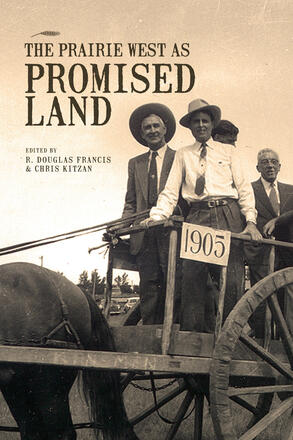
Description
So the emblem of the West
Our bright Maple Leaf is bless'd
To its children of the goodly open hand;
All the nations of the earth
Are now learning of its worth
And are flocking to this wealthy, promised land. - The Sugar Maple Tree Song, 1906
In 1906, the Sugar Maple Tree Song was just one example of the rhapsodic pieces that touted the Prairie West as the "promised land." In the formative years of agricultural settlement from the late nineteenth century to the First World War, the Canadian government, along with the railways and other Prairie boosters, further developed and propagated this image within the widely distributed promotional literature that was used to attract millions of immigrants to the Canadian West from all corners of the world. Some saw the Prairies as an ideal place to create a Utopian society; others seized the chance to take control of their own destinies in a new and exciting place. The image of the West as a place of unbridled prosperity and opportunity became the dominant perception of the region at that time. During the interwar and post-World War II eras, this image was questioned and challenged, although not entirely replaced, thus showing its pervasive influence. This group of essays, which includes contributions from some of the best-known Prairie historians as well as some of the most promising new scholars in the field, explores this persistent theme in Prairie history and makes an important contribution to the historiography of the Canadian West.
With Contributions By:
Sarah Carter
Catherine A. Cavanaugh
Brett Fairbairn
Michael Fedyk
R. Douglas Francis
David Hall
SteveHewitt
Laurence Kitzan
Chris Kitzan
George Melnyk
Doug Owram
Anthony W. Rasporich
Bradford J. Rennie
Bill Waiser
Matthew Wangler
Randi Warne